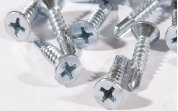Understanding the Benefits and Applications of Self-Threading Screws in Various Projects
Understanding Self-Threading Screws A Comprehensive Guide
Self-threading screws are a vital component in modern manufacturing and construction. They are designed to create their own thread as they are driven into a material, eliminating the need for pre-drilled holes in certain applications. This unique feature makes them particularly advantageous for various DIY projects, as well as industrial applications. In this article, we will explore the types, applications, advantages, and best practices for using self-threading screws.
Types of Self-Threading Screws
Self-threading screws come in various forms, each suited for specific materials and applications. Here are the most common types
1. Self-Tapping Screws These screws have a sharp tip that allows them to cut their own threads in materials such as wood, plastic, or metal. They come in different drive types, including Phillips, slotted, and hex, enhancing versatility.
2. Self-Drilling Screws Equipped with a drill bit-style tip, these screws can penetrate harder materials, like heavy gauge metals, without needing a pilot hole. They are often used in metalworking and structural applications.
3. Lag Screws Designed for heavy-duty applications, lag screws are larger, with a hex head and coarse threads. They are commonly used in construction for securing wood structures.
Applications of Self-Threading Screws
Self-threading screws are widely used across various industries due to their ease of use and efficiency
. Some common applications include- Construction In building frameworks, self-drilling screws are invaluable for fastening metal sheets and trusses. - Furniture Assembly Many furniture manufacturers use self-tapping screws as they provide a strong hold without the need for pre-drilling, simplifying the assembly process. - Automotive Industry Self-threading screws are crucial for securing components within vehicles, where reliability and strength are paramount. - Electronics In electronic device assembly, small self-tapping screws help secure components without damaging sensitive materials.
self threading screws

Advantages of Self-Threading Screws
The popularity of self-threading screws can be attributed to several advantages
1. Time Efficiency Self-threading screws reduce the need for pre-drilling and other preparatory steps, saving significant time during installation. 2. Cost-Effectiveness By minimizing labor and reducing material needs (like drill bits), they can be more economical for projects. 3. Strong Hold The ability to create their own threads ensures a tight fit, enhancing the overall strength and durability of the assembly. 4. Versatility Available in various sizes, shapes, and materials, self-threading screws can be utilized in countless applications.
Best Practices for Using Self-Threading Screws
To maximize the benefits of self-threading screws, consider the following best practices
1. Choose the Right Screw Ensure that you select the appropriate type of self-threading screw for your specific material and application. For example, opt for self-drilling screws when working with metal. 2. Use Adequate Torque When driving screws, apply consistent torque. Over-tightening can strip the threads or break the screw, while under-tightening can lead to a weak hold.
3. Ensure Proper Alignment Align the screw perpendicularly to the material surface to ensure even pressure distribution and prevent damaging the screw or the material.
4. Pre-Drilling for Hard Materials For dense or hard materials, consider pre-drilling a pilot hole to prevent cracking and make the installation easier, especially when using larger screws.
Conclusion
Self-threading screws are a remarkable innovation that has simplified assembly processes across various industries. Their ability to create threads without pre-drilling, combined with their strength and versatility, makes them a go-to choice for countless applications. By understanding the different types available, their applications, and best practices for usage, contractors, manufacturers, and DIY enthusiasts can ensure successful and reliable outcomes in their projects. Whether you are constructing a building or assembling furniture, self-threading screws provide a reliable solution that enhances efficiency and performance.
-
Weatherproof Plastic Expansion Anchors for OutdoorNewsJun.06,2025
-
Sustainability in the Supply Chain: Eco-Friendly TEK Screws ProductionNewsJun.06,2025
-
Load-Bearing Capacity of External Insulation FixingsNewsJun.06,2025
-
Double Head Bolts: Enhancing Efficiency in Industrial MachineryNewsJun.06,2025
-
Corrosion Resistance in Chipboard Screws: Coatings for Wholesale DurabilityNewsJun.06,2025
-
Butterfly Toggle Bolts : Enhancing Structural ResilienceNewsJun.06,2025
